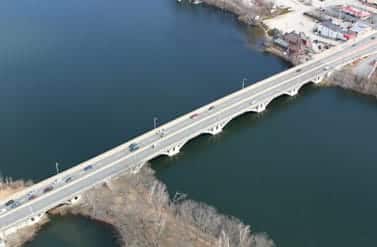
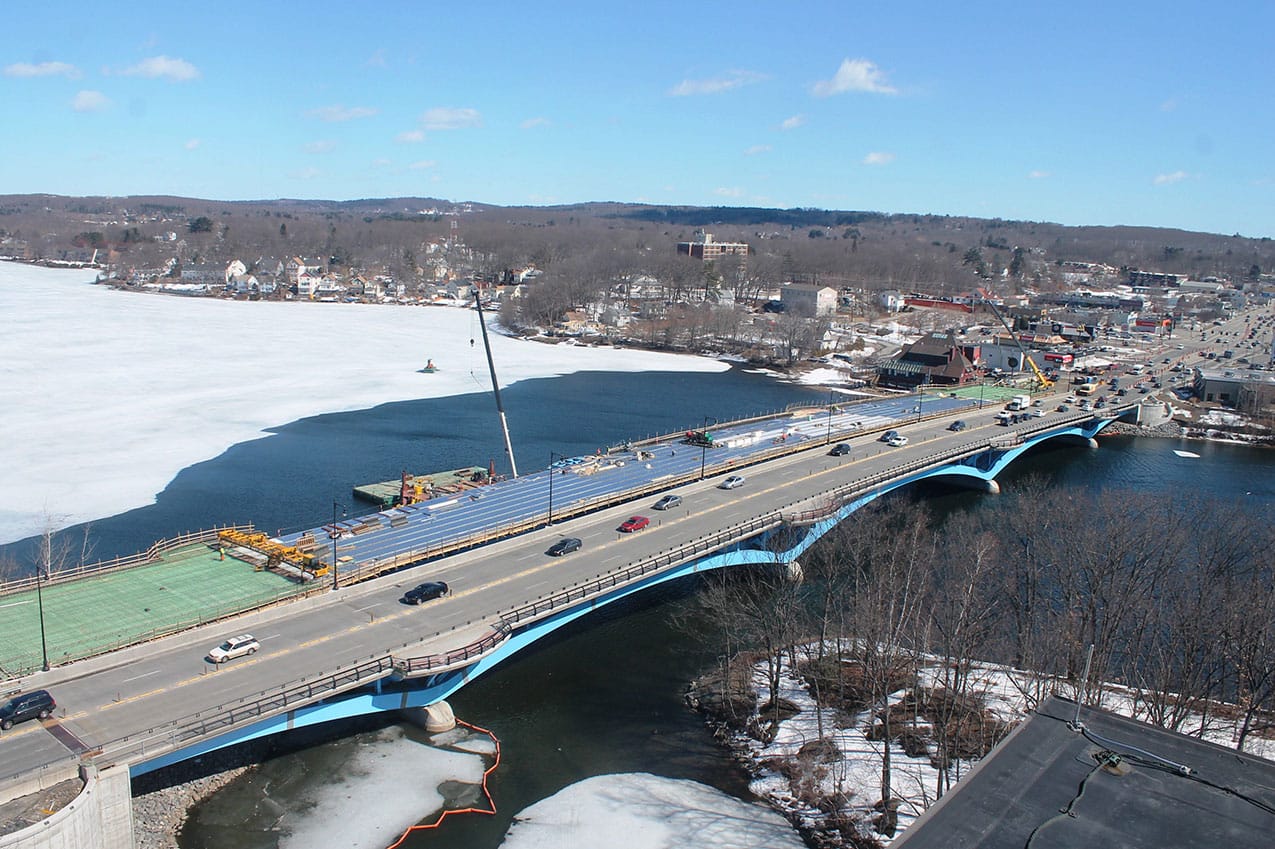
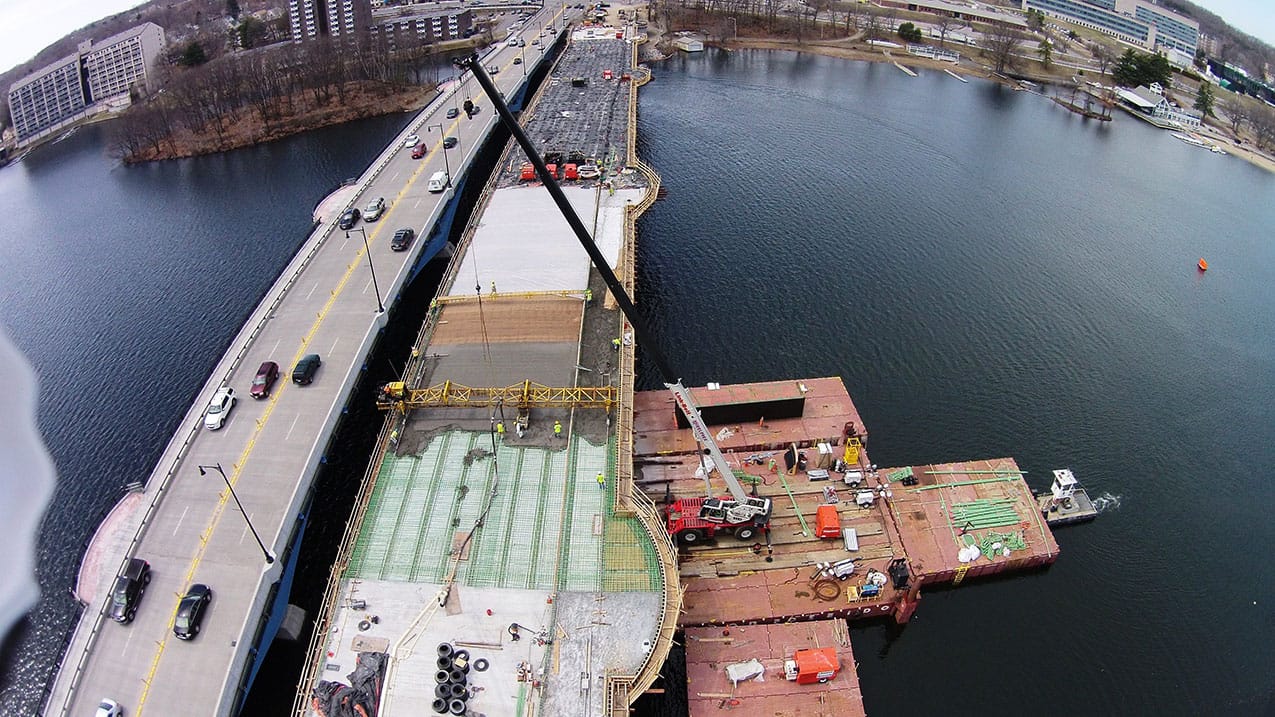
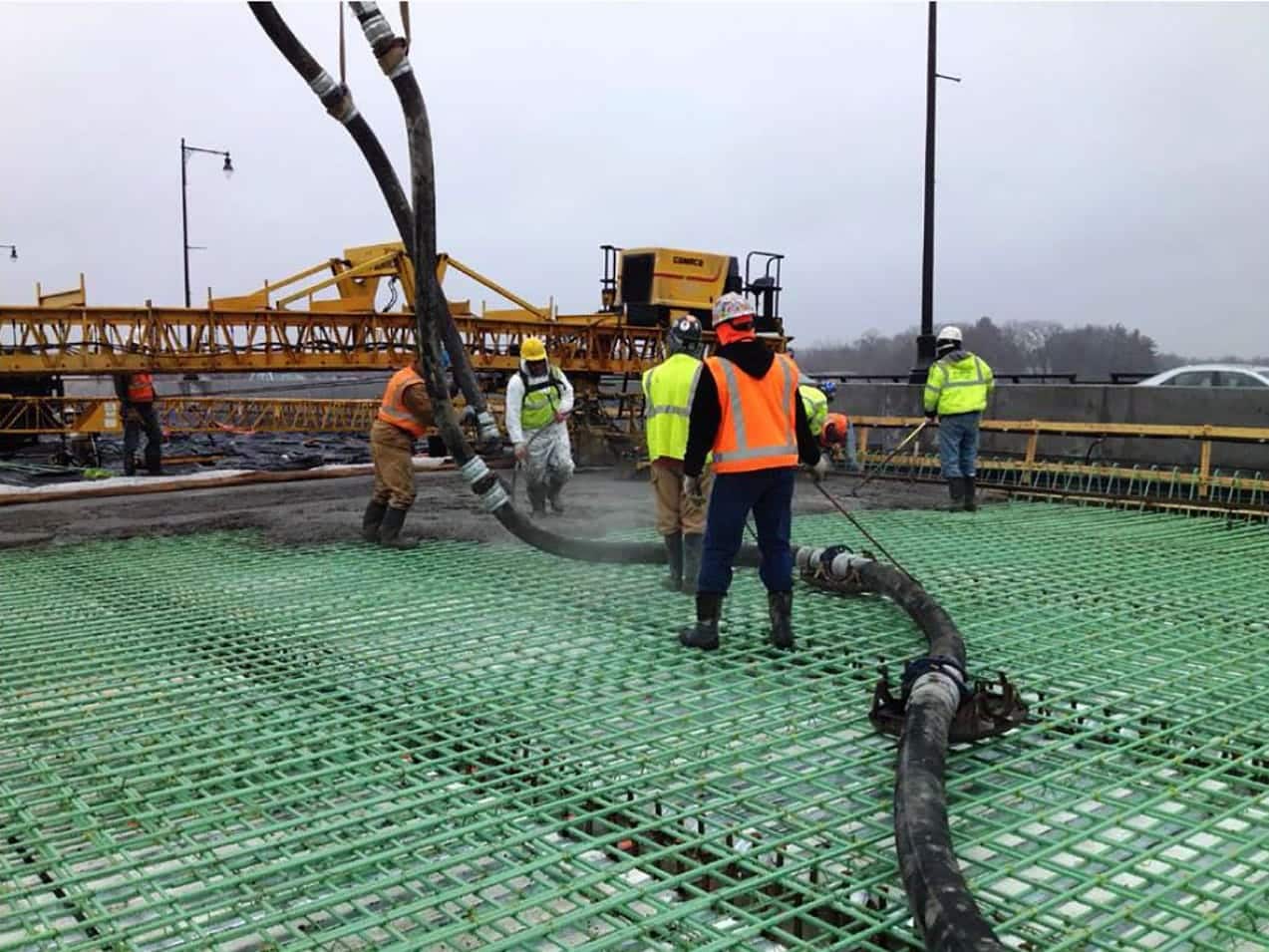
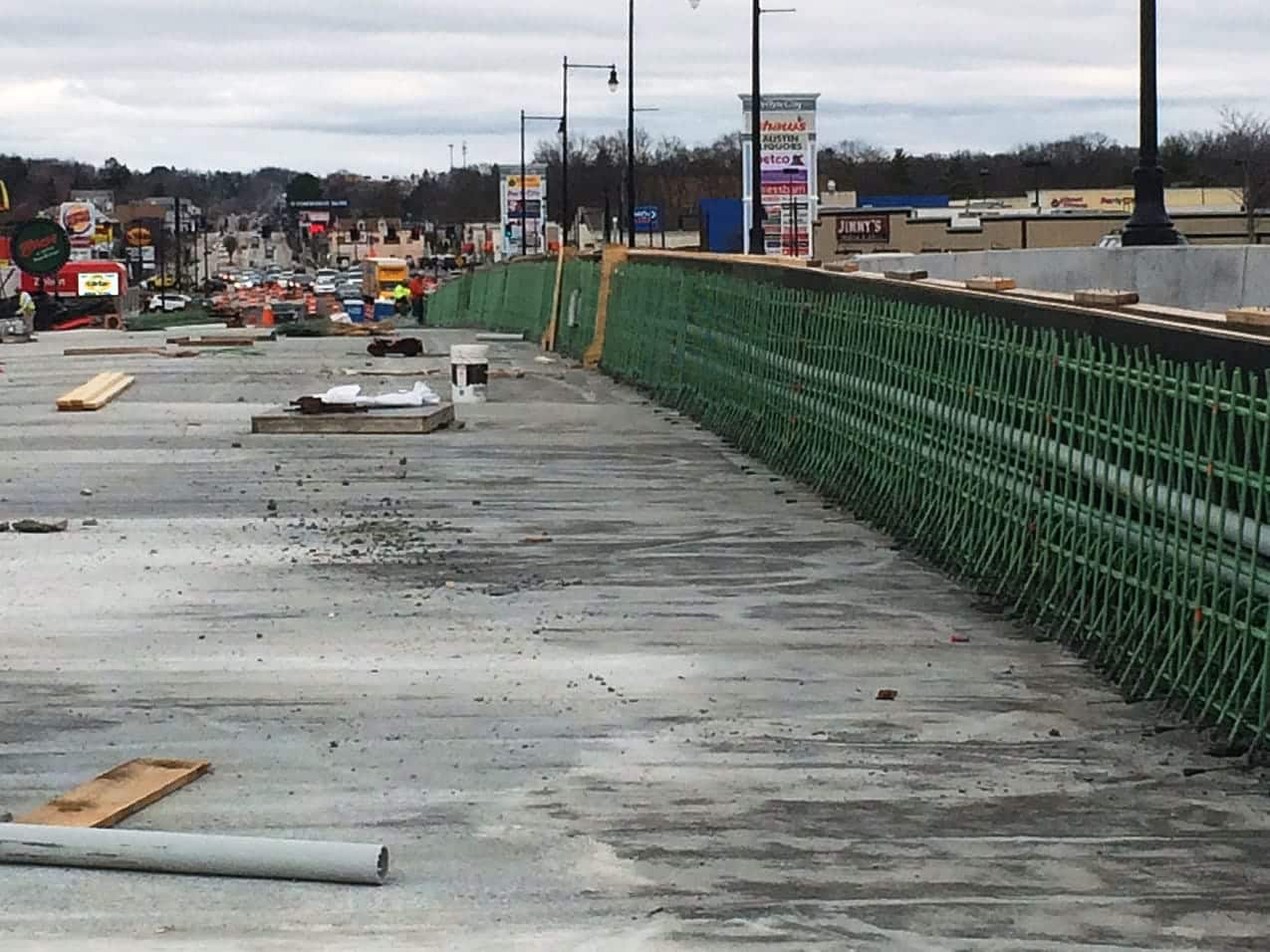
KENNETH F. BURNS MEMORIAL BRIDGE
Worcester-Shrewsbury, MA
PROJECT DETAILS
- Design Criteria:
- Maintain two lanes in each direction during construction
- Provide access for sailboats between both sides of the lake
- Accommodate bicycles and pedestrians
- Owner: Massachusetts Department of Transportation
- Engineer: Fay, Spofford & Thorndike (FST)
- General Contractor: Middlesex Company
- Epoxy-Coated Reinforcing Steel: 900 tons
- Total Project Cost: $89 million (est.)
- Total Project Size: Length: 870 ft
Width: 143 ft
The Kenneth F. Burns Memorial Bridge is the sixth bridge built across Lake Quinsigamond, the first being a floating log bridge built in 1806 that was destroyed by waves in 1807. The second was a suspension bridge completed in 1817 that fell into the lake later that year. It was replaced with a second floating bridge. The fourth bridge was made from rocks and earth, opening in 1863. The fifth was originally built in 1916 using concrete, stone and steel. This bridge has two eastbound and two westbound travel lanes. The bridge plays an important role for pedestrians, particularly in crossing from homes on the Worcester side of the lake to shopping and dining amenities in Shrewsbury. The span currently carries an average of 53,000 vehicles per day.
The Kenneth F. Burns Memorial Bridge is being replaced under the Accelerated Bridge Program (ABP). This program is designed to reduce the number of structurally deficient bridges across the Commonwealth and prevent others from falling into this classification.
The replacement bridge will have three eastbound and westbound travel lanes for vehicles with bicycle-accommodating shoulders on both the left and right side. The bridge also has ADA compliant sidewalks on both sides of the bridge and new turning lanes are provided at the ends of the bridge. The new central arch will span 240 ft with a clearance of 23’6” providing a suitable clearance for sailboats. The replacement bridge will be approximately 870 feet from end to end and 143 feet wide and it utilizes approximately 900 ton of epoxy-coated reinforcing steel to provide corrosion protection to the reinforcing steel.